Classical CDs Round-Up 16 | reviews, news & interviews
Classical CDs Round-Up 16
Classical CDs Round-Up 16
From period-instrument Mahler to Psycho, this month's releases sifted
This month’s selection includes historical recordings by a neglected violinist and interesting interpretations of Brahms and Mahler. A notorious choral blockbuster works its insidious magic, and Australia’s best-known classical musician takes on Kipling. Two young pianists shine in very different repertoire, and orchestral fireworks are provided by a provincial French orchestra. Can a respected British conductor cast new light upon a staple of 20th-century British music? And what does one of the world’s scariest film scores sound like played by four people? Spiritual sustenance is provided by a life-enhancing DVD and a new issue of music from Estonia’s best-known Minimalist.
CD of the Month
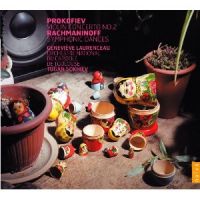 Prokofiev: Violin Concerto No 2, Rachmaninov: Symphonic Dances Geneviève Laurenceau (violin), Orchestre National du Capitol de Toulouse/Tugan Sokhiev (Naïve)
Prokofiev: Violin Concerto No 2, Rachmaninov: Symphonic Dances Geneviève Laurenceau (violin), Orchestre National du Capitol de Toulouse/Tugan Sokhiev (Naïve)
A regional orchestra given a shot in the arm by a young Russian conductor… no, this isn’t Liverpool or Bournemouth, but Toulouse. The two works here have little in common stylistically but were both composed by Russians in exile. Prokofiev’s Second Violin Concerto was premiered in Madrid in 1935 shortly before its composer returned to live in the USSR. It’s a darker piece than its predecessor – you sense this in the brooding bass lines and lean textures, but Prokofiev’s melodic gift is never suppressed for long. It gets a really fresh, idiomatic performance from Geneviève Laurenceau, the Toulouse orchestra’s leader. Listen to the way she avoids schmaltz in the central Andante assai and keeps the tension high in the closing lop-sided waltz. Tugan Sokhiev’s accompaniment alternates between spikiness and warmth, with the solo winds given their due.
It’s the Rachmaninov Symphonic Dances which make this disc an essential listen; Rachmaninov’s 1940 swansong, composed in Los Angeles in 1940, smoulders, broods and catches fire to thrilling effect in Sokhiev’s hands. You’ll weep at his handling of the wistful recollection of the First Symphony at the close of the first dance, and the burning nostalgia at the heart of the final dance is painful. But then the tempo cranks up, the Dies Irae battles with a theme from Rachmaninov’s Vespers and good wills out with a mighty tamtam stroke. Detailed recording and fearless virtuosity make this a thrilling experience, even better than Petrenko’s recent Liverpool recording of the work.
Other Releases
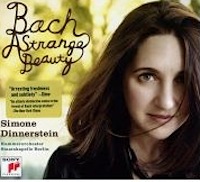 Bach: A Strange Beauty Simone Dinnerstein (piano), Kammerorchester Staatskapelle Berlin (Sony)
Bach: A Strange Beauty Simone Dinnerstein (piano), Kammerorchester Staatskapelle Berlin (Sony)
I’ve always preferred Bach’s keyboard music when played on piano, and the most immediately appealing items on Simone Dinnerstein’s new Sony CD are three naughtily inauthentic piano transcriptions of organ pieces. Busoni’s prelude to the cantata BVW 639 sounds glorious in Dinnerstein’s hands; the final major chord a real shock after the dark fin-de-siècle colours which precede it. She delights in the sonorities offered by a modern piano and her account of the English Suite No 3 exemplifies her approach: it’s brilliantly articulated in the faster movements but wonderfully expressive when the music permits; the edgy chromaticism of the slow Sarabande is exquisite.
The solo items are coupled with two of Bach’s keyboard concertos, Dinnerstein accompanied by a remarkably flexible chamber group drawn from Barenboim’s Staatskapelle Berlin. Both are supremely enjoyable, particularly the weightier D-minor concerto which sparkles in spite of its sombre key signature. As an example of how beguiling Bach can sound when played on a modern concert grand, Dinnerstein’s disc could hardly be bettered.
Watch Simone Dinnerstein perform and discuss Bach
 Brahms: Complete Symphonies Nos 1-4 Radio-Sinfonieorchester Stuttgart des SWR/Roger Norrington (Hänssler)
Brahms: Complete Symphonies Nos 1-4 Radio-Sinfonieorchester Stuttgart des SWR/Roger Norrington (Hänssler)
Sir Roger Norrington’s brand of historically informed performance as pursued in Stuttgart since 1998 is an interesting one: basically, playing romantic repertoire with a modern orchestra, with strings adopting "pure tone" - ie, not using any vibrato. This can yield peculiar results – Norrington’s vibrato-free Mahler recordings illuminate whilst sounding downright strange, and his detractors accuse him of dodgy scholarship. But there’s no denying the clarity which this approach can bring to the most congested 19th-century scores, and Brahms’s wind and brass solos emerge here with no effort. There’s also the orchestral layout; having first and second violins split between left and right gives their exchanges extra clarity. Norrington’s live performances, originally issued on DVD, are unfussy, flowing and affectionate. I like his refusal to slow down when the trombone chorale returns at the end of the First Symphony, and the wind playing in the opening movement of the Second Symphony is exceptional. The same symphony’s closing Allegro con spirito is breezy and unbuttoned, the final major chord a blazing cry of triumph.
The Third and Fourth Symphonies emerge best of all – the elaborate string writing in the former’s first movement crystal clear, and the soulful horn passage before the recapitulation autumnal and misty eyed. The more severe sound world of the final symphony suits Norrington’s approach best – the strange accompaniment in the final chaconne’s first variation really does sound like what Alex Ross described as “the growl of a sleeping dog” – horn pedal notes ringing out like mighty farts.
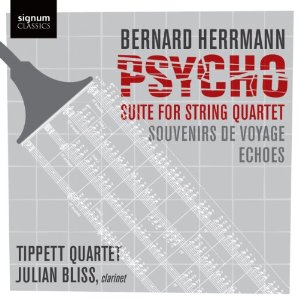 Bernard Herrmann: Psycho (suite for string quartet); Souvenirs de Voyage; Echoes Tippett Quartet, with Julian Bliss (clarinet) (Signum)
Bernard Herrmann: Psycho (suite for string quartet); Souvenirs de Voyage; Echoes Tippett Quartet, with Julian Bliss (clarinet) (Signum)
Bernard Herrmann remains one of the few film composers whom most people can name. Best known for a series of remarkable collaborations with Alfred Hitchcock, his career was bookended by scores to Citizen Kane and Taxi Driver. Famously grumpy, he was a versatile musician who found his métier as a composer of soundtracks, though he wanted above all to be respected as a serious composer of concert works and as a conductor. Herrmann’s relationship with Hitchcock fell apart after the score to 1966’s Torn Curtain was rejected as not commercial enough – extracts from Herrmann’s music, complete with 12 roaring horns and massed harps, can be heard on a wonderful Sony disc conducted by Esa-Pekka Salonen. The string quartet Echoes was completed shortly afterwards. Brooding, intense and occasionally violent, it’s unable to shake off the darkness of the Hitchcock collaborations. Less painful is the ambitious clarinet quintet Souvenirs de Voyage which alludes to Vertigo’s rapturous love music.
Herrmann’s famous monochrome string score for Psycho is heard in a neat arrangement for double-tracked string quartet. The aggression is more of a shock when the microphones are placed this close; pizzicato notes have a powerful snap and it’s wonderful to hear Herrmann’s dissonant chords spelt out so clearly and cleanly. All three works are given exemplary performances by the Tippett Quartet and Julian Bliss’s liquid legato in the quintet is seductive.
Watch the opening titles of Psycho
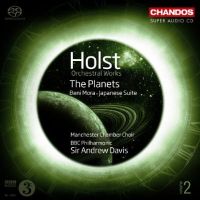 Holst: The Planets, Beni Mora, Japanese Suite BBC Philharmonic/Andrew Davis (Chandos)
Holst: The Planets, Beni Mora, Japanese Suite BBC Philharmonic/Andrew Davis (Chandos)
Chandos’s ongoing Holst series was to have been conducted by the late Richard Hickox. Happily, Sir Andrew Davis has stepped in to direct volume two. Holst’s outlook was cosmopolitan: he followed with interest musical developments in mainland Europe and had studied Sanskrit literature; the three dances which make up Beni Mora use themes derived from a trip he made to Algeria. They are delightful – even when the smell of the village green threatens to intrude, Holst commands attention with a startling harmony or quirky rhythm, and the increasingly belligerent repeated theme heard in the final movement is hypnotic, looking forward to the starker moments of The Planets. The Japanese Suite’s material was supplied courtesy of a Japanese dancer who whistled the themes to Holst, who quickly knocked them up into an 11-minute suite in 1915.
Davis’s new version of The Planets is good, but not as exciting as the recent LPO version. Mercury flies with gossamer lightness and Saturn’s climax includes some shattering bell sounds. But Mars and Jupiter don’t terrify or soar as they do under Jurowski’s hands, and the impression is a little too polite and English. Still, the recorded sound is fantastic, and this disc is worth hearing for the enjoyable couplings.
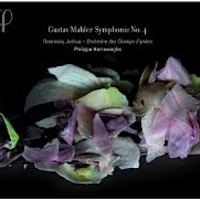 Mahler: Symphony No 4 Orchestre des Champs-Elysées/Philippe Herreweghe, with Rosemary Joshua (soprano) (LPH)
Mahler: Symphony No 4 Orchestre des Champs-Elysées/Philippe Herreweghe, with Rosemary Joshua (soprano) (LPH)
Roger Norrington’s vibrato-free approach to Mahler has already been mentioned, and here we have the first period-instrument recording of a Mahler symphony. Philippe Herreweghe is best known for his Baroque work, but he has also tackled Schumann and Bruckner with his Orchestre des Champs-Élysées. So maybe Mahler is not such a big step. Yet in a symphony as transparently scored as this, one wonders whether the effort was worthwhile. Mahler played with "pure tone" can sound a little desiccated, but Herreweghe’s gut strings do play with a lithe responsiveness and the slow movement is exquisite.
Mahler’s elaborate wind counterpoint is well served in the first two movements – I loved the sound of Herreweghe’s clucking oboes and bassoons, and narrow-bore piston horns cope magnificently. But I did miss the grandeur, the apocalyptic weight of sound that a modern orchestra can provide. It’s not the gates of heaven opening before the slow movement’s close, but the unzipping of a tent flap. And the terrifying trumpet calls in the first movement don’t chill as they should. Rosemary Joshua’s singing in the final song is appealingly light-toned, closing an interpretation full of incidental delights which is mandatory listening for Mahlerphiles but not a library first choice.
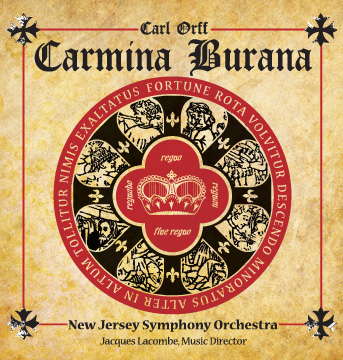 Orff: Carmina Burana; Janáček: Suite from The Cunning Little Vixen New Jersey Symphony Orchestra/Jacques Lacombe, with Sarah Coburn (soprano), Vale Ridout (tenor) and Stephen Powell (baritone) (NJSO)
Orff: Carmina Burana; Janáček: Suite from The Cunning Little Vixen New Jersey Symphony Orchestra/Jacques Lacombe, with Sarah Coburn (soprano), Vale Ridout (tenor) and Stephen Powell (baritone) (NJSO)
Orff’s notorious cantata is an easy work to despise – especially given that the composer chose to remain in Nazi Germany in the 1930s and Forties. Orff redeemed himself in the eyes of many through his subsequent advocacy of music education. As an exuberant celebration of the joy of massed music-making, Carmina Burana possesses undeniable charm. And in a performance as good as this, you end up rolling over and caving in to its riotous mix of clanging bells and shouty choruses. The percussion writing is brilliantly served in this live performance from New Jersey forces. I’ve never heard such a prominent bass drum in the opening O Fortuna and the piano part is thrillingly in its clarity, underlining Orff’s debt to Stravinsky’s Les Noces and Symphony of Psalms. It’s an electric, live performance in the best possible sense, all concerned giving their all in this debut concert with the young Canadian conductor Jacques Lacombe, who was offered the post of chief conductor several months later. Marvel at the way the brass and strings tear into the tiny Tanz 10 minutes in, or, how Lacombe’s huge chorus abruptly raise and lower their volume against the oompah orchestral backing to In taberna quando sumus. Sorry, but it’s impossible not to enjoy, and respect is due to Lacombe’s excellent soloists for not hamming things up.
Janáček’s excerpts from The Cunning Little Vixen are heard in Václav Talich’s arrangement, with the composer’s quirky scoring smoothed out. But it’s still gorgeous, the ecstatic climax in the second section packing a real punch.
 Arvo Pärt: Stabat Mater, Symphony No 3, Cantique des degrés Rudfunk-Sinfonieorchester Berlin/Kristjan Järvi (Sony)
Arvo Pärt: Stabat Mater, Symphony No 3, Cantique des degrés Rudfunk-Sinfonieorchester Berlin/Kristjan Järvi (Sony)
Stick on the opening paragraph of the Estonian composer Arvo Pärt’s Stabat Mater and you’ll either be enraptured or left completely cold. There’s the familiar descending high string lines, the modal textures and a slow rate of harmonic movement which suggests Bruckner. Pärt can be a maddeningly inconsistent composer, who moves as much as he can baffle, and it’s often impossible to establish why certain pieces work so well and others fall flat. Luckily, each work on this disc succeeds magnificently – the 27-minute span of the Stabat Mater, a 2008 revision of a smaller scale 1985 work never feels overstretched. Kristjan Järvi manages to lift the dance rhythms in the faster sections whilst sustaining the slow tempi with supernatural control. He’s helped by the excellent singing of the RIAS Kammerchoir, who shine in the brief, radiant Cantique des degrés, where Pärt seems to be looking back to the 19th century.
The Symphony No 3 was dedicated to Kristjan Järvi’s father Neeme Järvi. It’s a transitional work from 1971, composed when Pärt had abandoned 1960s Modernism and was developing his own style based on a study of Renaissance music. There’s a thrilling, craggy majesty to the louder tutti passages, and it’s refreshing to hear Pärt sounding so dynamic and unbuttoned, delighting in the sounds a modern orchestra can provide – sample the glorious, Brucknerian brass writing. It’s played with palpable commitment and completes what is the most alluring, accessible CD of Pärt’s orchestral music currently available.
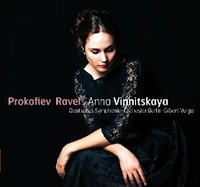 Prokofiev: Piano Concerto No 2, Ravel: Piano Concerto in G Anna Vinnitskaya (piano), Deutsche Symphonie-Orchester Berlin/Gilbert Varga (Naïve)
Prokofiev: Piano Concerto No 2, Ravel: Piano Concerto in G Anna Vinnitskaya (piano), Deutsche Symphonie-Orchester Berlin/Gilbert Varga (Naïve)
Prokofiev’s 1915 Piano Concerto No 2 should be far better known. That opening paragraph could accompany the bleakest of film noirs, but the darkness is always offset by a quirky melodic touch, or one of Prokofiev’s melodic sidesteps. It’s phenomenally difficult to play, and Anna Vinnitskaya’s performance is incredibly assured. The first-movement cadenza had my floorboards wobbling, and the heavy brass entry overwhelms - one of music’s most delicious Grand Guignol moments. It’s really exciting, with excellent orchestral playing.
The Ravel coupling is less successful. We’re out of a Russian night and into bright, Mediterranean sunshine – this is music which has to sound casual, improvised and conversational. Vinnitskaya is fantastic in the bravura passage work, but she seems to find it hard to relax - the opening movement’s bluesy ruminations sound a bit too stiff and self-concious here. But the Adagio assai is coolly beautiful, with an exquisite cor anglais solo, and the Presto zips along. Again, it’s the orchestral playing under Gilbert Varga which impresses. Well worth hearing for the Prokofiev.
Reissues of the Month
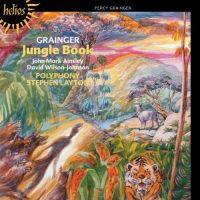 Percy Grainger: Jungle Book John Mark Ainsley, David Wilson-Johnson, with Polyphony/Stephen Layton (Hyperion)
Percy Grainger: Jungle Book John Mark Ainsley, David Wilson-Johnson, with Polyphony/Stephen Layton (Hyperion)
An internet search for further biographical information on the Australian composer Percy Grainger (1882-1961) will always throw up another fascinating Graingerian fact – that he was an early pioneer of electronic music, or that he invented the sports bra. This year marks the 50th anniversary of his death, so look forward to a slew of new recordings and reissues – Chandos have just released a 19-disc box set of his music. This Hyperion CD was originally released in 1996, and it’s a delight. Grainger’s settings of verse from Kipling’s The Jungle Book were composed between 1898 and 1947. They are examples of "elastic scoring" – certain instruments essential for each song, and others added at the discretion of the conductor. Strings and harmonium are heard most, and Stephen Layton has added winds in some of the settings. It’s important to get past the superficial quirkiness, as the choral writing is technically brilliant, Grainger’s harmonies often spine-tingling. Try the Night-Song in the Jungle and The Inuit, or sample the chilling central section of The Beaches of Lukannon.
We also get 15 other short choral works, mostly folk-song arrangements. It’s the imaginative handling that makes them shine – Grainger’s souped-up harmonies never sounding inappropriate, as in Early One Morning. Play the opening sea shanty Shallow Brown and shed tears of joy as David Wilson-Johnson’s baritone floats over a calm sea of soft voices and ukuleles.
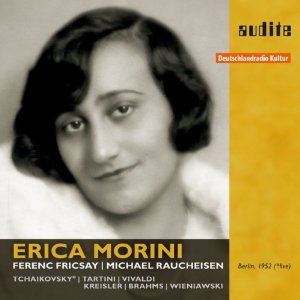 Tchaikovsky: Violin Concerto (plus works by Tartini, Kreisler, Brahms, Vivaldi and Wieniawski) Erica Morini (violin), RIAS-Symphonie-Orchester, Ferenc Fricsay (recorded 1952) (Audite)
Tchaikovsky: Violin Concerto (plus works by Tartini, Kreisler, Brahms, Vivaldi and Wieniawski) Erica Morini (violin), RIAS-Symphonie-Orchester, Ferenc Fricsay (recorded 1952) (Audite)
Described by one commentator as “probably the greatest woman violinist who ever lived”, Erica Morini (1905-1995) responded curtly by saying, “A violinist is a violinist and I am to be judged as one – not as a female musician.” From an Austrian Jewish family, she emigrated in 1938 and eventually became a US citizen. She was close to Bruno Walter, Pablo Casals and George Szell but made few recordings, and this marvellously restored CD gives us performances taken from German radio archives. The main draw is a slightly cut version of the Tchaikovsky concerto, accompanied by the brilliant Hungarian conductor Ferenc Fricsay. It’s a thrilling account, and in remarkably clear, well-balanced mono sound.
The violin and piano couplings are fun; Respighi’s anachronistic arrangement of a Vivaldi sonata swoons and smoulders inauthentically, and miniatures by Brahms, Kreisler and Wieniawski sparkle. As mentioned, the excellent recorded sound needs no apologies and the notes are fascinating.
Watch Erica Morini play Bruch
DVD of the Month
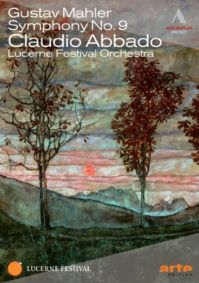 Mahler: Symphony No 9 Lucerne Festival Orchestra, Claudio Abbado (Accentus)
Mahler: Symphony No 9 Lucerne Festival Orchestra, Claudio Abbado (Accentus)
One of music’s most eloquent farewells, Mahler’s Ninth stutters into life with tolling-bell sounds on harp and syncopated horn notes. It’s tempting to play the work as an indulgent long goodbye, but the best interpretations invariably paint the piece as a celebration of life’s pleasures. In this performance on DVD, Claudio Abbado’s physical frailty is belied by the sheer oomph and dynamism he injects into the music. This is a great performance, stunningly rendered by the hand-picked orchestra. You sense it in the strutting majesty of the funeral march 20 minutes into the first movement, and in Abbado’s tender handling of the opening theme’s reprise, lower strings singing out as I’ve never heard them before. The inner movements are both ironic and affectionate, played with devastating accuracy but a judicious dose of black humour.
There’s not a hint of indulgent self-pity in the closing Adagio; the music possesses a warm, translucent glow. And it’s amazing to witness the stunned silence which continues several minutes after the final flickering cadence. If only London audiences were this respectful; instead, there’s invariably an idiot primed to shout “Bravo!” before the conductor’s baton has finished beating. Wonderful sound, and it’s nicely, discreetly filmed. It’s enlightening to watch the "Conductor Camera" take of the first movement and marvel at how Abbado achieves so much with such economy of gesture.
Watch the trailer for Mahler Symphony No 9
Explore topics
Share this article
more Classical music
 Sabine Devieilhe, Mathieu Pordoy, Wigmore Hall review - enchantment in Mozart and Strauss
Leading French soprano shines beyond diva excess
Sabine Devieilhe, Mathieu Pordoy, Wigmore Hall review - enchantment in Mozart and Strauss
Leading French soprano shines beyond diva excess
 Špaček, BBC Philharmonic, Bihlmaier, Bridgewater Hall, Manchester review - three flavours of Vienna
Close attention, careful balancing, flowing phrasing and clear contrast
Špaček, BBC Philharmonic, Bihlmaier, Bridgewater Hall, Manchester review - three flavours of Vienna
Close attention, careful balancing, flowing phrasing and clear contrast
 Watts, BBC Symphony Orchestra and Chorus, Bignamini, Barbican review - blazing French masterpieces
Poulenc’s Gloria and Berlioz’s 'Symphonie fantastique' on fire
Watts, BBC Symphony Orchestra and Chorus, Bignamini, Barbican review - blazing French masterpieces
Poulenc’s Gloria and Berlioz’s 'Symphonie fantastique' on fire
 Bell, Perahia, ASMF Chamber Ensemble, Wigmore Hall review - joy in teamwork
A great pianist re-emerges in Schumann, but Beamish and Mendelssohn take the palm
Bell, Perahia, ASMF Chamber Ensemble, Wigmore Hall review - joy in teamwork
A great pianist re-emerges in Schumann, but Beamish and Mendelssohn take the palm
 First Persons: composers Colin Alexander and Héloïse Werner on fantasy in guided improvisation
On five new works allowing an element of freedom in the performance
First Persons: composers Colin Alexander and Héloïse Werner on fantasy in guided improvisation
On five new works allowing an element of freedom in the performance
 First Person: Leeds Lieder Festival director and pianist Joseph Middleton on a beloved organisation back from the brink
Arts Council funding restored after the blow of 2023, new paths are being forged
First Person: Leeds Lieder Festival director and pianist Joseph Middleton on a beloved organisation back from the brink
Arts Council funding restored after the blow of 2023, new paths are being forged
 Classical CDs: Nymphs, magots and buckgoats
Epic symphonies, popular music from 17th century London and an engrossing tribute to a great Spanish pianist
Classical CDs: Nymphs, magots and buckgoats
Epic symphonies, popular music from 17th century London and an engrossing tribute to a great Spanish pianist
 Sheku Kanneh-Mason, Philharmonia Chorus, RPO, Petrenko, RFH review - poetic cello, blazing chorus
Atmospheric Elgar and Weinberg, but Rachmaninov's 'The Bells' takes the palm
Sheku Kanneh-Mason, Philharmonia Chorus, RPO, Petrenko, RFH review - poetic cello, blazing chorus
Atmospheric Elgar and Weinberg, but Rachmaninov's 'The Bells' takes the palm
 Daphnis et Chloé, Tenebrae, LSO, Pappano, Barbican review - lighting up Ravel’s ‘choreographic symphony’
All details outstanding in the lavish canvas of a giant masterpiece
Daphnis et Chloé, Tenebrae, LSO, Pappano, Barbican review - lighting up Ravel’s ‘choreographic symphony’
All details outstanding in the lavish canvas of a giant masterpiece
 Goldscheider, Spence, Britten Sinfonia, Milton Court review - heroic evening songs and a jolly horn ramble
Direct, cheerful new concerto by Huw Watkins, but the programme didn’t quite cohere
Goldscheider, Spence, Britten Sinfonia, Milton Court review - heroic evening songs and a jolly horn ramble
Direct, cheerful new concerto by Huw Watkins, but the programme didn’t quite cohere
 Marwood, Power, Watkins, Hallé, Adès, Bridgewater Hall, Manchester review - sonic adventure and luxuriance
Premiere of a mesmeric piece from composer Oliver Leith
Marwood, Power, Watkins, Hallé, Adès, Bridgewater Hall, Manchester review - sonic adventure and luxuriance
Premiere of a mesmeric piece from composer Oliver Leith
 Elmore String Quartet, Kings Place review - impressive playing from an emerging group
A new work holds its own alongside acknowledged masterpieces
Elmore String Quartet, Kings Place review - impressive playing from an emerging group
A new work holds its own alongside acknowledged masterpieces

Add comment